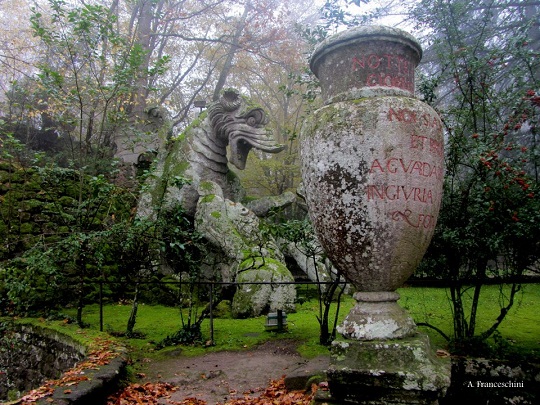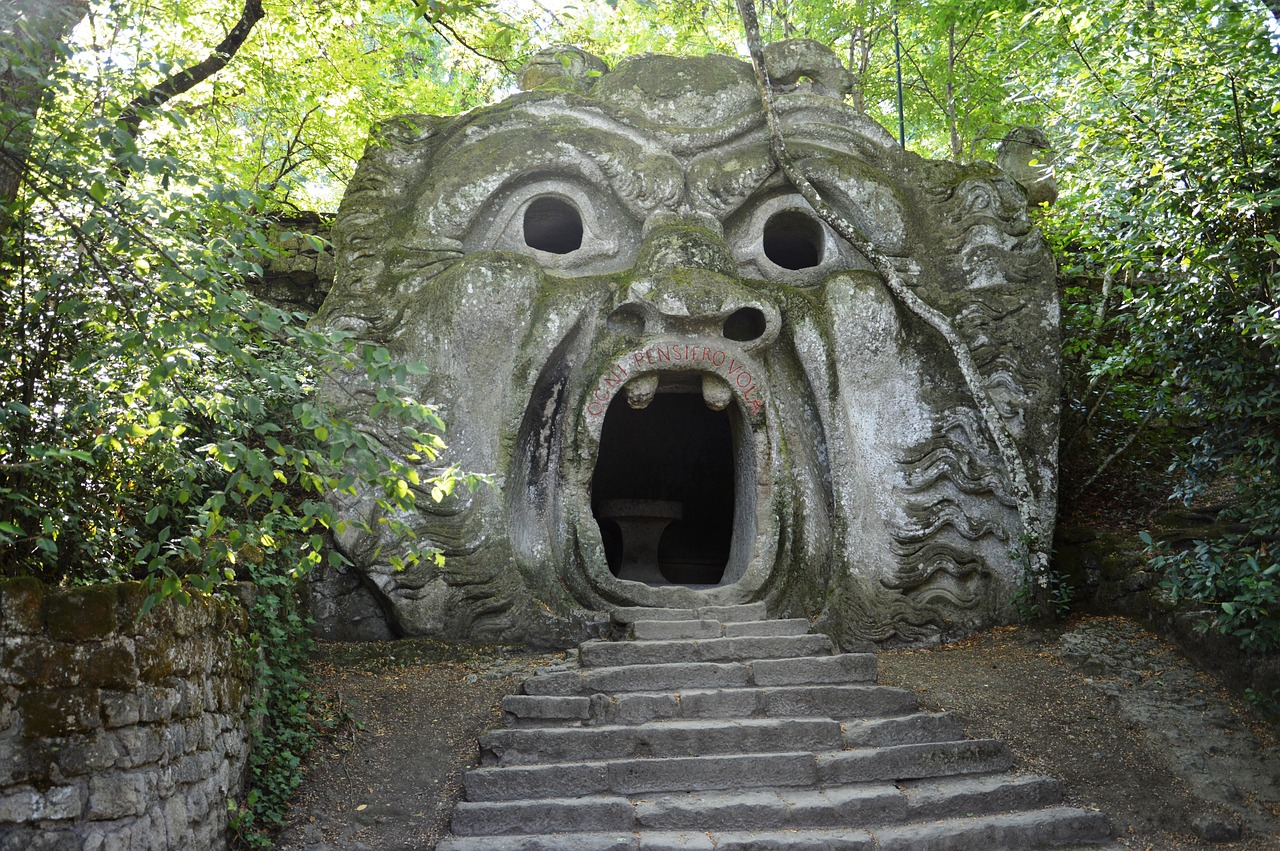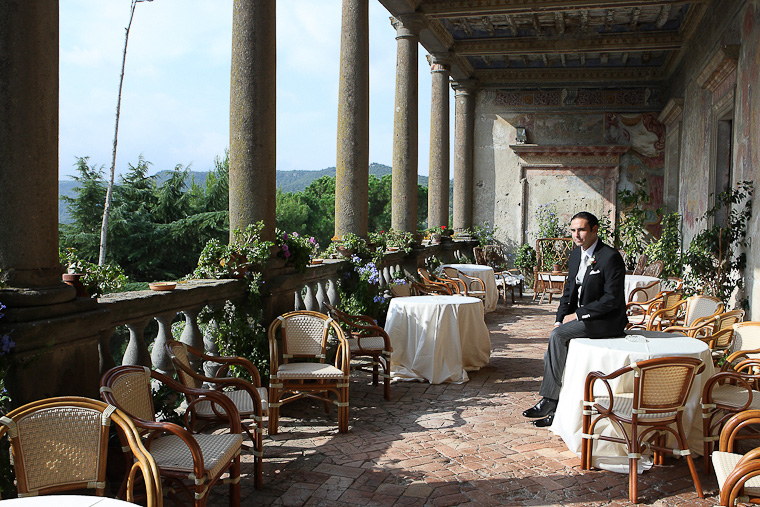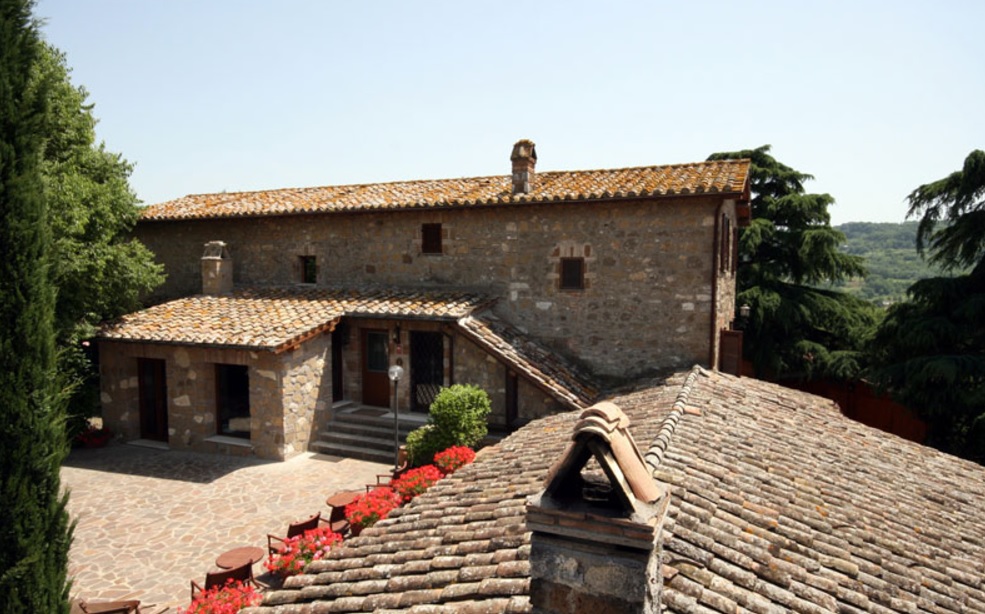Login with your member password below to see your content
Why not become a Supporter?
Click the more info button to see what we offer...
Bomarzo:
Wilderness & Wonderland
Mention Bomarzo to Italians and, often, you’ll get quizzical looks. Some people might recognize the name, but not all. A few that do might pull a scary face and growl and try to frighten you; others will light up, smile, and say, “Ah, Parco dei Mostri.”

Parco dei Mostri is what Bomarzo is known for; it’s the big attraction around here… and to a degree, the rest of this region goes undiscovered, which is good or bad, depending on one’s point of view. If you’re like me, then you love these quiet, off-the-beaten-track places where you and your family/friends can be off on your own and feel as if you have the place all to yourselves.
Alternatively, a hotelier in Mugnano in Teverina, for example, might appreciate the region being better known (for business reasons). But locals think that Mugnano in Teverino gets enough custom already and would like it to stay just as it is.
Where to Stay
Mugnano in Teverina is not for those in search of a trendy nightspot. It’s a tiny hilltop village a couple of miles outside Bomarzo town, where there really aren’t many disturbances at all. There is, however, the Palazzo Orsini, one of the most charming B&Bs you’ll ever find. It is both comfy and classic, with that old medieval feel, along with privacy, amazing hospitality—care of host Gabriella—and the most perfect views of the River Tiber.
For a stay in Bomarzo itself, closer to the Parco dei Mostri, then La Casa Del Sole, with all the necessary amenities, is my pick.
But the point I make is that Parco dei Mostri is not what Bomarzo is all about. This region is literally studded with fascinating places: towns, monuments, B&Bs, old Etruscan sites, and of course castles and churches.
Many a memorable night has, I’m sure, been spent in the gorgeous manor, La Locanda Della Chiocciola, on the Tiber plain. We spent 2 nights there, and on that I can recommend it as yet another fine example of the balance that rural Italy strikes between modern and ancient.
Out and About
Before I get to the Parco dei Mostri—which I will do, promise—I must mention the Etruscan pyramid, Piramide Etrusca o Sasso del Predicatore: mossy, worn-down, and tucked away. When finally you do find it, the quietness of before gets quieter still, and one is reminded, once again, of the gravity of Italian history.
A word of warning though: I talk often of losing myself in Italy’s wonders. For the most part, I’m being metaphoric. On your way to this pyramid, you can literally get lost. These old, overgrown Etruscan sites don’t give themselves up easily. I would suggest taking along some kind of GPS, because once found, it is so worth it.
Monte Casoli
The rugged and volcanic Monti Casoli nature resort has been fashioned from millennia of geological upheaval. Rich in Etruscan heritage, it’s of tremendous archeological importance and is thus a protected area. But one can still walk freely in what are quite eerie surroundings.
To me it’s like taking a step into the surreal. Being there detaches me from the world I know… although I think the reason is probably because when I have been there, I’ve come from the Park of Monsters…
Parco dei Mostri

Up to now I’ve downplayed the surreal in favor of the sublime. But the truth is, I love this garden. Of course I do. I’m myself an old painter. Considering Salvador Dali was so taken with it, you can imagine it being, well, ‘bizarre.’ But in a good way, I think, despite its torturous theme.
You can see all the carvings and statues, and their descriptions, on the Park’s website here. I won’t give you my account—I’d be psychotic by the end. Besides, Parco dei Mostri is experiential; it’s like being in a gallery: you can see images on the internet but the energy of the art is reserved for those who go.
There’s no guided tour or guides, but the groundsmen in this impeccably kept garden are very helpful.
The Story of the Park
Not your average ‘happy place,’ the Bosco Sacro (Sacred Grove) or ‘Villa of Wonders’ was created in 1552 by Prince Pier Francesco Orsini. He’d just been through a horrible war, been held for ransom for years, and on his return home—finally—his wife Giulia, whom he loved extremely, died.
So he commissioned a famous architect, Pirro Ligorio—who’d completed the Saint Peter’s Cathedral after the death of Michelangelo—to design what is his expression of grief.
The tale of Prince Orsini is a tragic one, reflecting the hardships of the time, but the park’s final piece, created 20 years after the first, is not a monster but a temple, in honor of his 2nd wife. A happy ending, perhaps… What do you think?
Where to Eat?
Well, in that very same park there’s a giant mouth, aka ‘the Mouth of Hell,’ inside of which, on the tongue, is a picnic table. Seriously.
If that’s not to your taste, I’d suggest trying a little trattoria nearby called Piccolo Mondo, which maintains that unique garden feel while serving up scrumptious food and delicious wine.
Further afield, seeing as we are talking about the region as a whole, Osteria Belvedere, in Bassano, is just a few miles east. The cheese fondue with gnocchi, along with a glass of cold, crisp Colli Albani, is exceptional.
How to Go
Having
a car and a GPS, getting to Bomarzo from Rome is fairly easy (it’s
about 40 miles away) and a two-night trip is the ideal
counterpoint to those crowds and that noise.
Using public transport is a bit iffy, but doable.
Take a local train to Viterbo; from there, find the Cotral bus terminal and from there, take the bus to Bomarzo via Orte.
I can promise you that in these peaceful surrounds, despite the monsters, you will sleep easy. Enjoy.
Map
- HOME
- A Secret Italy Home Page
- Index
- Bomarzo





